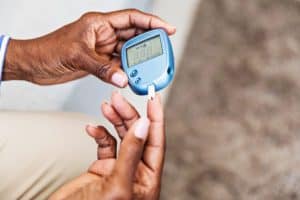|
|
Introduction
Diabetes and Peripheral Arterial Disease (PAD) are two distinct medical conditions, but they often intersect, leading to a complex and challenging situation for patients. Both conditions share a common denominator: the impact on blood vessels. In this blog, we will explore the relationship between diabetes and PAD and the significant consequences they bring to affected individuals.
The Connection between Diabetes and PAD
Peripheral Arterial Disease, often referred to as “poor circulation,” occurs when plaque buildup narrows the arteries that carry blood to the extremities, usually the legs. This leads to reduced blood flow, resulting in symptoms like leg pain, cramping, and impaired wound healing. Diabetes, on the other hand, is a chronic metabolic condition that affects how the body processes glucose, leading to high blood sugar levels. The relationship between diabetes and PAD is strong, with several key factors:
1. Atherosclerosis: Both conditions are associated with atherosclerosis, a process in which arteries become clogged with fatty deposits. For individuals with diabetes, the risk of atherosclerosis is significantly higher, contributing to the development and progression of PAD.
2. High Blood Sugar: Elevated blood sugar levels in diabetics can cause damage to blood vessels over time, further exacerbating PAD symptoms. This high sugar environment accelerates the formation of arterial plaque.
The Impact of Diabetes on PAD Patients
1. Increased Severity: Diabetic patients with PAD often experience more severe symptoms and complications. Their reduced ability to manage blood sugar levels complicates the already challenging task of maintaining blood flow to the legs.
2. Wound Healing: Diabetes is known to impair wound healing due to its impact on the circulatory system. For PAD patients who have wounds or ulcers on their legs, this can be especially problematic. Poor circulation hampers the body’s ability to deliver necessary nutrients to the affected area, leading to delayed healing and increased risk of infection.
3. Risk of Amputation: The combination of diabetes and PAD significantly raises the risk of amputation. When blood flow is severely compromised, the body may struggle to fight off infections or provide enough oxygen to keep tissues alive. This scenario can necessitate amputation to prevent the spread of infection or save the patient’s life.
4. Pain Management: The pain experienced by PAD patients can be even more challenging for diabetics. The neurological complications of diabetes can amplify pain perception, making it harder for patients to cope with the discomfort associated with PAD.
5. Cardiovascular Complications: Both diabetes and PAD are associated with an increased risk of heart disease. When combined, the risk of heart attacks and strokes can be substantially higher, leading to potentially life-threatening consequences.
Managing Diabetes and PAD
Managing diabetes and PAD simultaneously can be a complex task, but it’s not impossible. Here are some key strategies:
1. Blood Sugar Control: Diabetic patients with PAD must focus on tight blood sugar control. This can help slow the progression of arterial plaque and reduce the risk of complications.
2. Lifestyle Changes: Adopting a healthy lifestyle with regular exercise and a balanced diet is crucial. Smoking cessation is particularly important, as smoking exacerbates both conditions.
3. Medications: Physicians may prescribe medications to manage blood sugar and improve blood circulation. Antiplatelet drugs and statins are often used in the management of PAD.
4. Wound Care: Specialized wound care and frequent monitoring are essential for those with diabetes and PAD. Early intervention can prevent serious complications.
Conclusion
The impact of diabetes on patients with Peripheral Arterial Disease is undeniable. It complicates the disease, making it more challenging to manage and increasing the risk of serious complications, including amputation. Education, early intervention, and comprehensive care are crucial in helping individuals with these coexisting conditions lead healthier, more fulfilling lives. By addressing both diabetes and PAD together, medical professionals can make a significant difference in the lives of their patients.







